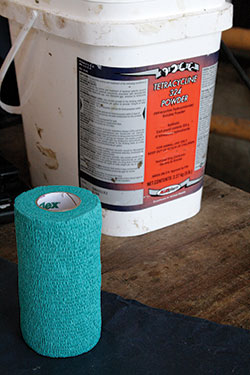
Currently, all bulk milk tank trucks are tested for beta-lactam drugs as required by the Pasteurized Milk Ordinance. That includes penicillin, ampicillin, amoxicillin, cephalosporins, and others. Any tanker found with beta-lactam or other drug residue violations is rejected and that milk is never used for human consumption. The beta-lactam residue testing program has been tremendously successful in reducing residue violations from a low incidence to an extremely low incidence.
From low to very low
In 1996, of the 3.4 million bulk milk pickup tankers evaluated, 0.104 percent tested positive. Through stepped-up education and industry initiatives, of the 3.1 million bulk milk pickup tankers screened by industry and state regulatory agencies from October 2015 to September 2016, 0.011 percent tested positive for drug residues. In addition to those tests, some tetracycline family drug testing already is occurring. In 2016, nearly 60,000 bulk milk pickup tankers were tested with no violative residues found in milk.
All Grade A milk plants processing milk, yogurt, and powder are expected to participate in the pilot program. Many dairy manufacturing plants (butter, cheese, and dairy ingredients) may participate as well. All plants participating in the tetracycline pilot program will be required to test at least one out of every 15 bulk milk tankers, or 6.7 percent of loads leaving farms. In some cases, plants may choose to test significantly more. This means that nearly all dairy farms will have their milk tested for tetracyclines during the next 18 months.
Two options exist
There are currently two tests approved by the Food and Drug Administration (FDA) to test for tetracycline residues for the pilot program: the Charm II Tetracycline Drug Test and Charm ROSA Tetracycline-SL Test. Final approval for two additional tests, the Neogen BetaStar Advanced for Tetracyclines Test and the IDEXX-SNAP Tetracycline Test, is pending and is expected shortly. Other tests are anticipated to be approved as the pilot program progresses.
If a bulk milk tanker is found to have a violative tetracycline residue, a trace back to confirm the dairy farm of origin will occur — just the same as with beta-lactam residue testing. The offending farm will be responsible for the value of the dumped milk and may temporarily lose their milk license.
Work with your veterinarian
Now is a good time to review your farm’s tetracycline family drug use with your veterinarian. A cornerstone of any animal health program is the Veterinarian-Client-Patient-Relationship (VCPR) to establish your herd health plan for disease prevention and disease treatment protocols including the use of antibiotics. The “2017 FARM Milk & Dairy Beef Drug Residue Prevention Reference Manual” and “FARM Animal Care Program Herd Health Plan Template” are excellent resources for you and your veterinarian.
All over-the-counter drugs must be used exactly according to the manufacturer’s label directions, including the specific disease condition being treated, amount, route of administration, length of treatment, along with meat and milk withdrawal times. Any deviation from the manufacturer’s label directions, whether with an over-the-counter or prescription drug, requires a veterinarian’s prescription. This prescription includes information on the specific disease condition being treated, amount, route of administration, length of treatment, and meat and milk withdrawal time.
Oxytetracycline is approved by the Food and Drug Administration for use in lactating dairy cattle. It is approved as an injectable drug for treatment of diseases such as pneumonia, shipping fever, bacterial scours, metritis, and other conditions. Oxytetracycline is also approved as a topical treatment for certain superficial eye infections like pinkeye. There are no tetracycline family drugs approved for intramammary use for treating mastitis, although a veterinarian can prescribe for such treatment.
Watch out for hooves

University of Minnesota research also shows that applying 2 grams or less of tetracycline powder per hoof lesion for a maximum of two lesions per cow will not cause violative residues in individual cows. This 2-gram level is also enough to successfully treat the lesion.
Let’s be clear. Since no tetracycline powder is FDA-approved for treating digital dermatitis, this extra-label use requires a veterinarian’s prescription. Therefore, it is important that your veterinarian and hoof trimmer develop a treatment protocol that includes the dose and withdrawal time for meat and milk. There is no wiggle room here.
Ultimately, it is the responsibility of every dairy farmer to ensure that antibiotic residues do not end up in milk offered for sale. Our customers trust the safety of milk because of your long-standing commitment to producing a safe and nutritious product. Contact your milk cooperative or processor if you are concerned about a residue in your milk or need assistance in residue testing. When in doubt, keep it out!











